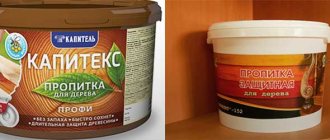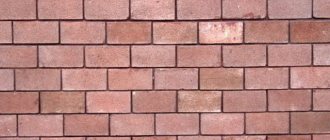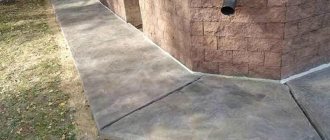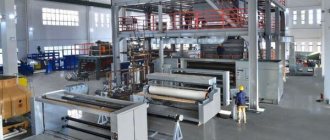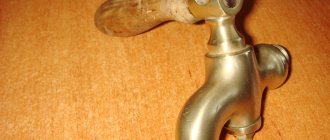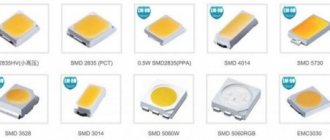What is convection
Convection is the movement of heat by air currents inside the oven. During the process, cold and warm air masses are exchanged and mixed, as a result of which the temperature inside the furnace becomes the same and uniform throughout the entire volume of the enclosed space.
Depending on the mechanism of action, it is customary to distinguish between natural (free) convection, when air flows mix naturally. In this case it happens quite slowly. There is also forced convection, the principle of which is incorporated in modern ovens; this is a mode of forced circulation of warm air in the space, which is carried out thanks to special fans.
Why is convection needed?
It is difficult to overestimate the advantages of the convection mechanism in an electric oven or other device. This technology is provided in most modern household ovens. First of all, it is indispensable when baking large pieces of meat, pies, making pizza, grilled chicken or toast.
Convection promotes uniform cooking of the dish, with its help you can avoid burning in one part of the dish and inadequate baking in another. Previously, to do this, you had to constantly turn the sheet over and change the position of the dish on it. The technology allows you to cook large pieces of fish or whole meat. In addition, convection adds a number of advantages:
- rapid warming up of cold air, accordingly, saving time to obtain the desired temperature;
- the appearance of a crispy crust, the ability to dry out an overly juicy dish;
- possibility of simultaneous preparation of several dishes;
- in the presence of moist convection, food is partially steamed, retaining more beneficial properties and minerals.
How to tell if your oven has convection
If, when purchasing an oven, you did not inquire about the presence of such an important technology in it, then special signs on the control panel will help you understand this issue. On different models and on different convection type options, they may differ, but most often they are presented in the form of a fan icon, as well as indicators of its operating modes.
Principle of operation
The operating principle of convection is based on an active heat exchange process, which is achieved using a powerful fan located on the rear wall of the heating chamber. It accelerates the movement of air flows, thereby facilitating rapid heating of the oven volume.
Do you need convection in an electric oven?
Although modern models are mostly presented with a convection function, it is not difficult to find a model on the market without it. When purchasing, everyone must decide for themselves whether the convection function is needed or not.
There are some users who, even having bought an electric oven with this function, used it only a few times. If the equipment is purchased with a specific desire to please your family and loved ones every day with a variety of dishes and baked goods, then this function is of course desirable. When purchasing, additionally find out all the details of a specific model with convection from the seller, so that later you do not have to be disappointed in the product.
Convection in the oven: what is it?
The word “convection” itself comes from the Latin convectio, which literally translates as “delivery.” Convection is a special type of heat exchange process, the transfer of internal energy occurs in directed jets. Previously, in our kitchens there were standard ovens that were almost no different from each other. The bottom was equipped with a double bottom, inside of which the burners were located. After the oven had warmed up, baking trays with baked goods could be placed in it. The top of the pie or roast goose was browned only due to the movement of heated air masses. At the same time, a fairly common case is when dishes are unevenly baked or burnt. Sometimes I had to turn the pan over, risking ruining the dish.
Modern technology makes the work of housewives easier
In modern kitchens today, ovens with a convection function are increasingly found. In most cases, they have two or more heating elements on the top and bottom. But even in such models, food sometimes burns and is not cooked through. So what is it - convection mode in the oven? After all, the quality of cooking depends on it.
Convection is the process of movement of thermal masses inside the enclosed space of a cabinet. The attentive reader will definitely understand that even in the old type of technology it is necessarily present, since this process is absolutely natural. The movement of thermal energy allows food to bake faster. How uniformly and efficiently this happens is another question. Manufacturers of modern technology are trying to solve this problem.
Soviet ovens served well for decades
Types of convection
There are two types of convection:
- free;
- forced.
Free, as we found out earlier, any oven can boast. Forced is considered an additional function and is distinguished by the fact that the movement of air inside the chamber occurs automatically due to the rotation of the fan blades.
This device is called a convector
Advantages and disadvantages of convection ovens
When going to the store, it will be better if the buyer familiarizes himself with the advantages and disadvantages of modern technology in advance. This will prevent you from overpaying for useless features. Let's highlight the pros and cons of ovens with free and forced convection in a summary table.
| Oven type | Advantages | Flaws |
| Free convection | Availability in every model; Low cost of equipment. | Uneven baking and frying; Possibility of preparing only one dish; Slow heating to a certain temperature. |
| With forced convection | Fast oven heating; Possibility of preparing several dishes at the same time; Uniform baking and frying. | Relatively high price. |
Modern stoves have comparatively more advantages. It's all about their design.
Exterior view of a modern oven from the inside
Free and forced convection
The movement of warm air masses itself, as noted above, is convection. But depending on what prompts them to circulate and mix, it is customary to distinguish between free (natural) and forced convection. Free convection occurs on its own in many processes, and occurs without external influence. Hot air becomes lighter, causing it to rise upward. Cold, being heavier – down. The efficiency and speed of such natural convection is much lower than that of forced or forced convection.
In the case of forced convection, air masses, under the influence of, for example, a special fan, circulate and mix much faster and more efficiently. As a result, hot air flows are fairly quickly distributed evenly in a confined space.
Types of convectors
Since the appearance of the first ovens with convection function, various types and modifications of this technology have appeared. And today there are many types of them:
- A fan is the simplest type of convection. The bottom line is that when the fan blades operate, the air inside begins to actively move and mix, resulting in uniform baking of dishes.
- Fan with ring heater. This is already a more efficient system. In this case, the fan has an additional heating element, as a result of which warm air flows fill the space much faster.
- Reinforced convector. The meaning lies in the name itself. Essentially, this is the same fan, but much more powerful. With such a system, the air warms up much faster and more intensely. The food in the oven quickly becomes covered with a thin, pleasant crust on top.
- Moist convection. In this case, a steam generator is also built into the oven, due to which the air inside is actively saturated with steam. This is stewing, not frying. At the same time, the dishes turn out juicy, they retain more nutrients.
- Double convection. With this type of convection, which is also installed on some oven models, two fans are located opposite each other, each of which forces air masses to circulate at its own level. This type is most convenient when preparing several dishes at the same time.
Each of these convectors has its own advantages. For example, reinforced ones are best suited for roasting meat. Before purchasing a specific model, you should ask the seller what kind of convection system is installed in the selected model.
Devices with convection function
Gas convection oven
Gas stoves with built-in convection ovens are popular with many practical housewives. This is primarily due to the relatively low cost of fuel. Externally, such a stove is practically indistinguishable from an ordinary modern gas stove. However, a special fan is built into the back wall of such devices.
The convector in such a stove has a number of operating features. Since in these models the heating part is located at the bottom, before putting the dish in the oven for cooking, you must first turn on the convector for a short period, and then send the dish into the oven for cooking.
The disadvantages of this type include the lack of complete sealing of the oven, since it is necessary that combustion products have a constant outlet. This ultimately leads to longer cooking times.
Electric convection oven
Some housewives wonder how necessary convection is in the oven, because it itself is a fairly powerful fryer, capable of heating up to a temperature of several hundred degrees. In fact, even such a powerful flow of warm air is not capable of ensuring ideal uniformity of its distribution, and, accordingly, uniform cooking of the dish.
Today, voluntarily abandoning the convector in the oven is not a reasonable decision. It is thanks to him that it is possible to achieve ideal uniform baking of the dish, juiciness and crispy crust on the surface. It’s no wonder that models of electric stoves with convection are the most popular among buyers today.
Grill with convection
The grill function quite often comes as part of the options of modern stoves. The grill allows you to easily and efficiently cook meat on a spit. There are two types of grill:
- Gas. In this case, there is a high-quality imitation of cooking over coals.
- Electric. Its feature is more convenient operation.
Grill and convection combine perfectly and complement each other. There are two types of grills: air grill and turbo grill. The desired mode is very simply activated by pressing the corresponding button on the control panel. The advantage of using an air fryer is the ability to obtain high-quality roasted meat with a crust.
What is convection in a microwave oven
For a long time now, the microwave oven has become an integral part of the kitchen equipment set of most families. It allows you to quickly heat up various foods and semi-finished products, and defrost foods. Microwave ovens today also use convection quite often.
Moreover, in essence it does not differ from that in a standard oven, except for the size. The fan distributes air flow inside the chamber. When a certain temperature is reached, the system automatically turns off. The use of convection in microwave ovens can significantly reduce the time of defrosting and cooking food.
What is convection like?
There are two main types of convection - natural (available in absolutely all ovens) and forced (improved, activated by a button).
- Natural convection in gas and primitive electric ovens is determined by the laws of physics: warm air rises and cold air moves down. This heat exchange is quite slow, and it is very easy to interfere with it. For example, if the oven door does not close tightly, it is often opened or wide baking sheets are used, a large number of dishes are baked at once, the circulation of hot streams is disrupted. The result is burnt, unbaked dishes, fallen biscuits, and a hard, unappetizing crust.
- Natural convection in modern electric stoves. Here the situation is a little better. As a rule, new stoves use several heating elements located around the perimeter of the cabinet. When using bottom and top heating, hot air moves more actively. Dishes are not so afraid of opening the door or other negative factors. However, natural convection cannot be compared with a special function.
Forced convection
Forced convection is called convection, which is caused by the action of external forces. In an oven, the fan becomes that force. It comes in several types:
- Ordinary. Moves air through simple blowing.
- Fan with heating circuit. It not only blows air, but also heats the oven, which increases its efficiency.
- Reinforced fan. Creates a more powerful flow of hot air, which makes food bake faster and better.
- Double fan. To enhance convection, two fans are sometimes built into the oven. They are located one above the other and blow air at each level. This is very convenient when baking several dishes at once.
- Moist convection. Relatively new technology. In addition to the fan, the oven has a steam generator that evaporates water from a special compartment. The fan circulates moist air throughout the chamber, so the food remains juicy and does not dry out. Dishes are steamed or stewed rather than baked. Moist convection allows you to preserve maximum benefits in products. In some oven models, the humidity level can be adjusted.
- Convection with grill. The function activates the fan and grill simultaneously. This combination allows the heat to be concentrated around the food being cooked. The dish turns out juicy, with an appetizing crust. Recommended for cooking large pieces of meat, whole vegetables, and fish.
We recommend: Types of hydrodynamic sewer cleaning machines and features of their application
Convection in gas and electric stoves
Today, almost every modern electric stove is equipped with a convection mode. The models differ only in the type of fan. It can be regular or with “bells and whistles” - reinforced, double, with a steam generator, etc.
The situation is different with gas stoves. The blowing function is only available in expensive models. This is due to the need to install additional protection. After all, if the fan blows out the flame, a gas leak will occur. Therefore, manufacturers, along with a fan, equip gas stoves with a gas control system and a protective shutdown. When the fire goes out, the gas supply is blocked.
Convection mode indicators
The main differences between wet convection, enhanced and dry
- Wet circulation. With this technology, in addition to the usual heating of the air, it is also actively saturated with moisture. This makes this convection ideal for steaming dishes.
- Increased circulation. The main detail in this case is a reinforced powerful fan. Perfect for those cases when you need to achieve a crispy crust on the surface of the dish.
- Forced dry circulation. In this case, the oven contains several fans, which also often have additional heaters.
The most useful programs
- Normal convection. Used for heating dishes, preparing dough before baking, drying herbs, berries and fruits.
- Convector, bottom heater and grill. This is the optimal mode for cooking semi-finished products.
- Convector and bottom heater. This mode is ideal for baking pizza, pies, and bread.
- Turbo grill. When this mode is turned on, the top heater, convector and grill are activated immediately. Good for cooking large pieces of meat.
All of these modes, except regular convection, should be used for a baking tray set at the same level.
Double convection
There are also models on the market with two convectors installed simultaneously. The main brand that produces such ovens is Samsung. The presence of two fans allows you to distribute and warm up the air masses much more efficiently.
Before purchasing equipment with this function, you should make sure that such a choice will be justified. The presence of this function significantly increases the cost of the equipment. The choice is appropriate if you plan to regularly prepare dishes in this mode.
Application of humid convection
Ovens in wet convection mode are used for steaming various meat, vegetables and other dishes. The design of ovens with a similar mode consists of the following elements: a fan, a special container for water and a generator that converts water into steam.
How to use convection
All oven manufacturers describe in detail the process of using this function in a specific model. But as a rule, the algorithm is similar.
When to turn on convection in the oven
When using equipment with this function, no preheating is required, with the exception of models that run on gas or when heating frozen foods.
How to turn it on
Please note that when using a convector, food is cooked at lower temperatures than usual. When switching on, you need to make adjustments of approximately 25 °C.
How to turn off convection
If the mode is not needed, you can simply disable it. To do this, you need to turn the knob to a special indicator. It is different for each specific model and is described in detail in the instructions for use.
Flaws
There are not many disadvantages of forced convection in an oven, and they are all relative.
There are only two drawbacks:
- a running fan consumes electricity;
- the price of a convection oven is higher than that of a conventional oven.
On average, you will have to pay an additional 2,000 rubles for the forced convection function in an electric oven. But considering that the equipment will serve you for many years, and convection will also replace the electric dryer, this amount cannot be called large.
We recommend: Gas meter service life: detailed analysis of popular models
How to make convection in an old oven with your own hands
Unfortunately, attempts to independently make a new oven with a convector out of an old oven will often not be successful, so the easiest way is to pay a little extra to buy such equipment in a professional store, which will also come with detailed instructions for use.
Today, convection in household ovens is becoming a common element. This is understandable - after all, thanks to this function, it has become possible to create truly exquisite culinary masterpieces and delight your loved ones with them.
Oven convection mode icon and other pictograms
Already in the store, one cannot help but notice on the equipment panel various icons that indicate a functional range. It’s not difficult to guess what exactly the icon means. Thus, the dashes indicate the heating elements, the teeth indicate the grill function, and the convector is drawn as a fan. By setting the desired mode, you can either fry the dish or make the crust crispy. Below is a description of the icons, among them in the photo is the convection icon in the oven.
All functions with explanation
